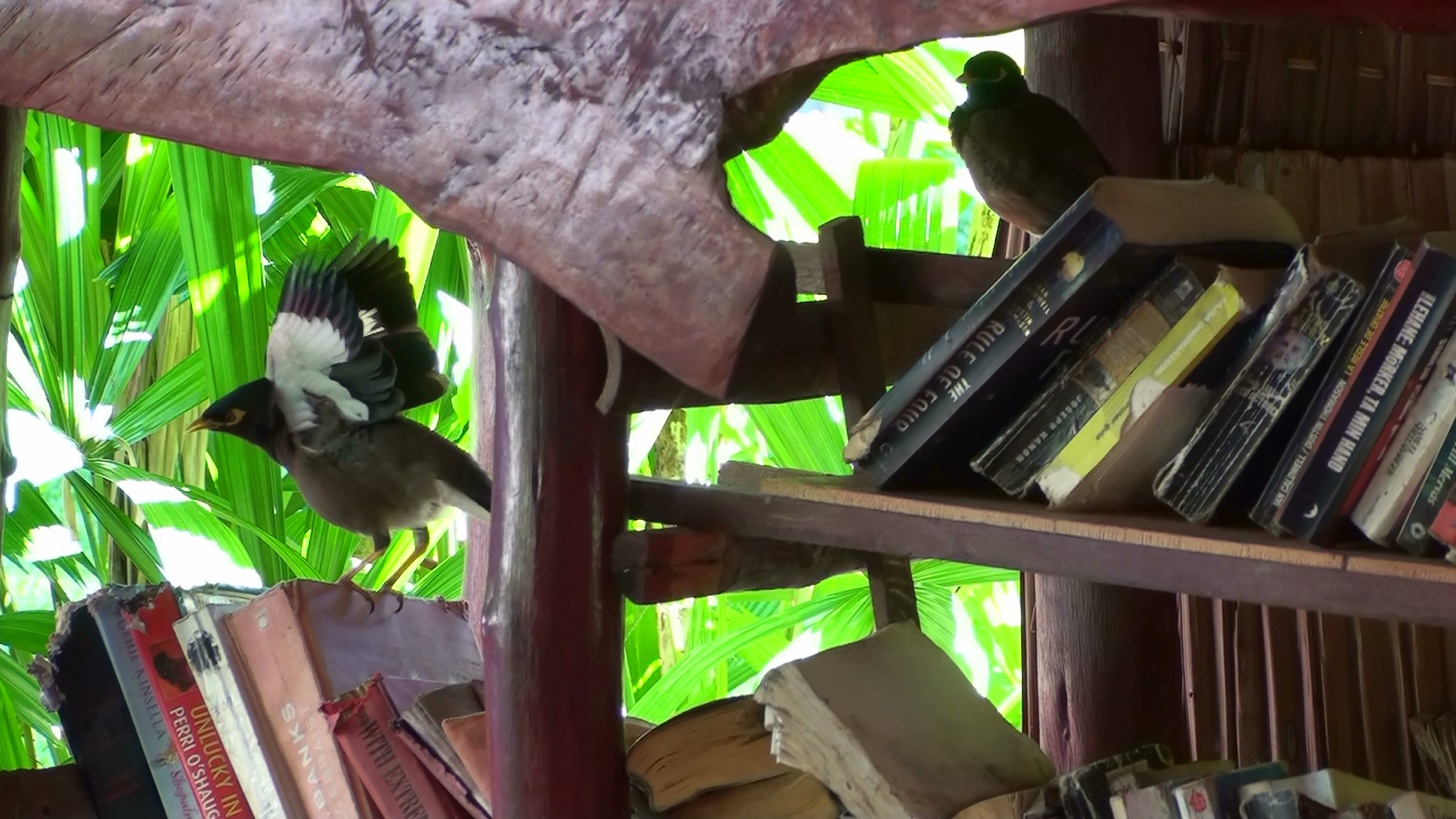Content #076
Acridotheres tristis (Common myna), Ko Kradan, Thailand 2009
‘The common myna or Indian myna (Acridotheres tristis), sometimes spelled mynah, is a bird in the family Sturnidae, native to Asia. An omnivorous open woodland bird with a strong territorial instinct, the common myna has adapted extremely well to urban environments. The range of the common myna is increasing at such a rapid rate that in 2000 the IUCN Species Survival Commission declared it one of the world’s most invasive species and one of only three birds listed among “100 of the World’s Worst Invasive Species” that pose a threat to biodiversity, agriculture and human interests. In particular, the species poses a serious threat to the ecosystems of Australia, where it was named “The Most Important Pest/Problem” in 2008. The French introduced it in the 18th century from Pondicherry to Mauritius with the aim of controlling insects, even levying a fine on anyone persecuting the bird. It has since been introduced widely elsewhere, including adjacent areas in Southeast Asia, Madagascar, the Middle East, South Africa, the United States, Argentina, Germany, Spain and Portugal, the United Kingdom, Australia, New Zealand and various oceanic islands in the Indian and Pacific Oceans, including prominent populations in Fiji and Hawaii. The common myna is regarded as a pest in South Africa, North America, the Middle East, Australia, New Zealand and many Pacific islands. It is particularly problematic in Australia. Several methods have been tried to control the bird’s numbers and protect native species. In Sanskrit literature, the common myna has a number of names, most are descriptive of the appearance or behaviour of the bird. In addition to saarika, the names for the common myna include kalahapriya, which means “one who is fond of arguments” referring to the quarrelsome nature of this bird; chitranetra, meaning “picturesque eyes”; peetanetra (one with yellow eyes) and peetapaad (one with yellow legs).’ Bron: Wikipedia.
